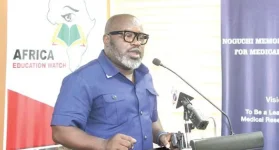A prominent education advocacy group is pushing hard for major budget shifts to tackle rural school inequalities. The African Education Watch wants the Finance Minister to take urgent action on educational infrastructure funding across Ghana's countryside.
The organization highlights massive challenges facing rural schools. With about 5,300 schools still operating under trees and makeshift shelters, the situation demands immediate attention. Northern Ghana especially needs help as international funding sources like USAID pull back support.
EduWatch calculates a whopping US$3 billion infrastructure gap for basic education between 2025 and 2030. They've pinpointed critical shortages, including 3,600 missing junior high schools and a staggering 800,000 desk deficit. Learning resources and technology facilities remain severely limited in rural areas.
The education watchdog argues that current budget allocation methods completely ignore rural educational needs. By redirecting over GHS 2 billion from the Annual Budget Funding Amount, they believe significant improvements could transform educational opportunities. Their core message is clear: budget planning must become more inclusive and responsive to rural school challenges.
The organization highlights massive challenges facing rural schools. With about 5,300 schools still operating under trees and makeshift shelters, the situation demands immediate attention. Northern Ghana especially needs help as international funding sources like USAID pull back support.
EduWatch calculates a whopping US$3 billion infrastructure gap for basic education between 2025 and 2030. They've pinpointed critical shortages, including 3,600 missing junior high schools and a staggering 800,000 desk deficit. Learning resources and technology facilities remain severely limited in rural areas.
The education watchdog argues that current budget allocation methods completely ignore rural educational needs. By redirecting over GHS 2 billion from the Annual Budget Funding Amount, they believe significant improvements could transform educational opportunities. Their core message is clear: budget planning must become more inclusive and responsive to rural school challenges.












